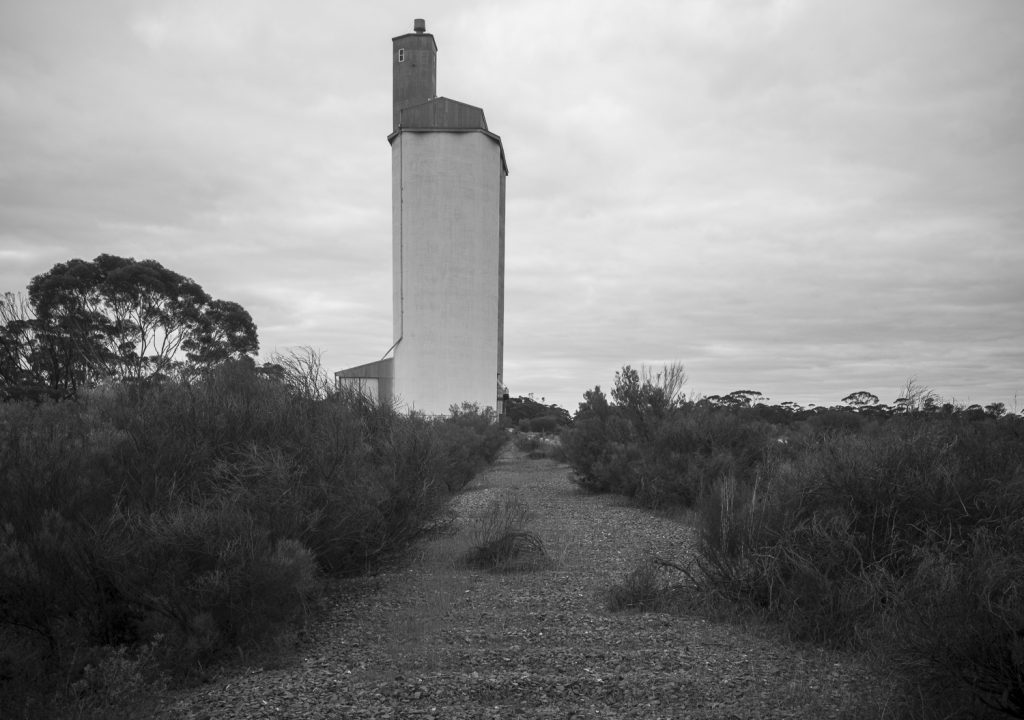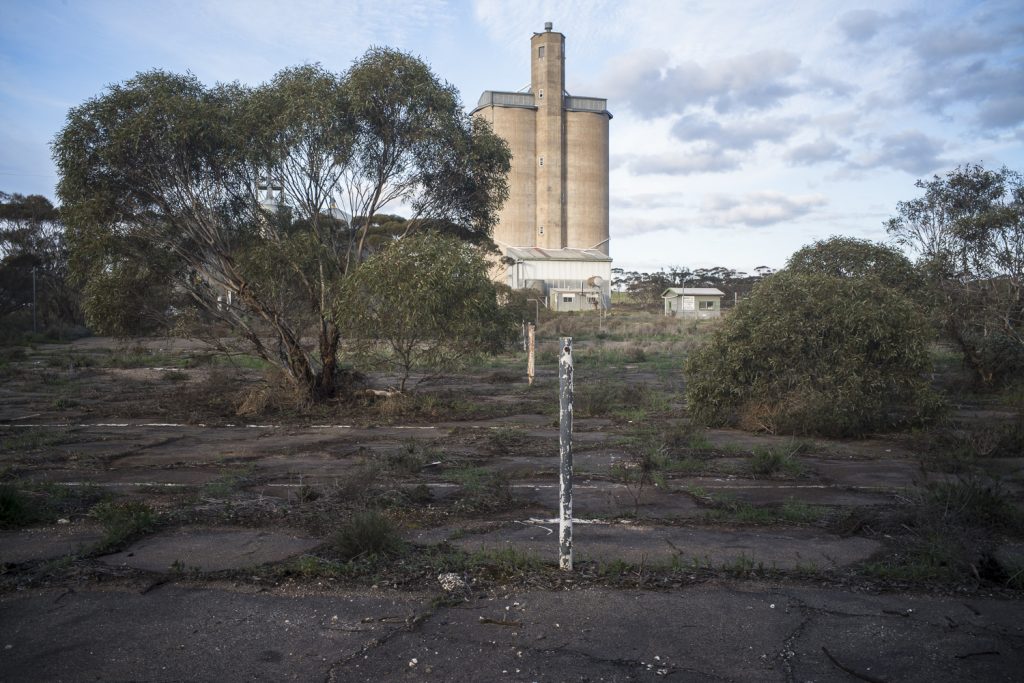I also plan to photograph the traces of the old Galga railway line for the of the Absent History section in the December exhibition. I ran out of 8×10 film on the Galga/Copeville trip, and so I could only scope the picture below that I wanted to make with the large format camera. I just hope that there will be some cloud cover on this trip as I want flat, even light to photograph the traces of the Galga railway.

The core of the December exhibition at the Murray Bridge Regional Gallery is the Space/Places section in the large, central gallery. In the modern physicalist conception of the primacy of space over place, space is understood as pure extendedness that no longer stands in relation to any concept of boundedness (eg., the emptiness of the void of the atomists). Photography is in opposition to this as it is always photography of particular places and their place-bound character. My photographic approach recovers place from space, an encounter with Galga or Copeville as bounded places in the Murray Mallee, in spite of their decay and ruins.
The materiality of these places means that they are more than a location in extended space, a subjective construct, or a social construction ie., place as a mere product of psychological, social, or political structures and processes. Though only a few people are currently living at Galga or Copeville, these places still retain significance–as a bounded or limited situatedness of existence that also has an openness (as indicated by the old railway line and the unsealed roads).
A topological approach pays attention to the limited, bounded, that is, placed, character of existence and experience. The significance of place is not to be found in our experience of place so much as in the grounding of our experience in particular places. Moreover, this binding to place is not a contingent feature of human existence, but derives from the very nature of human existence. To be is to be in place or To be is to be placed.

This photography works with a simple wakefulness—it is awakened to the ordinariness or everydayness of things and events. To attend to Galga or Copeville as interrelated places from which human living has emerged, is to attend to the past and to the future, to their bounded openness, and to the movement within and between these places. History, in other words, is tied to place, but no place has only one history belonging to it.
The photography is a poetics in that it is not designed to ‘map’ place, but to respond to it, to give expression to it, perhaps to evoke it – that is, to bring it to some sort of appearance. Photography as poetics enables the opening of the different places in the Murray Mallee.
I will not have time on the Tanunda trip to make photographs for Unknown Futures, which is the third section of the December exhibition. This refers to the possible futures of the Murray and Wimmera Mallee region.


[…] and unknown futures— which are the sections in the exhibition. This is an out-take from the space/place section of the […]
[…] did make the Wentworth photocamp as well as a subsequent photocamp at Tanunda where the photography for the Absent History section of the Mallee Routes exhibition spread into, […]
[…] of the mid-north of South Australia –eg., to Sedan, Cambrai and the Marne River— in 2019 and when I explored this area in 2020 whilst I was on the Kapunda Lavender Trail […]
[…] had been here in 2019 when I was scoping the South Australian mallee and I recently returned with a large format camera. […]